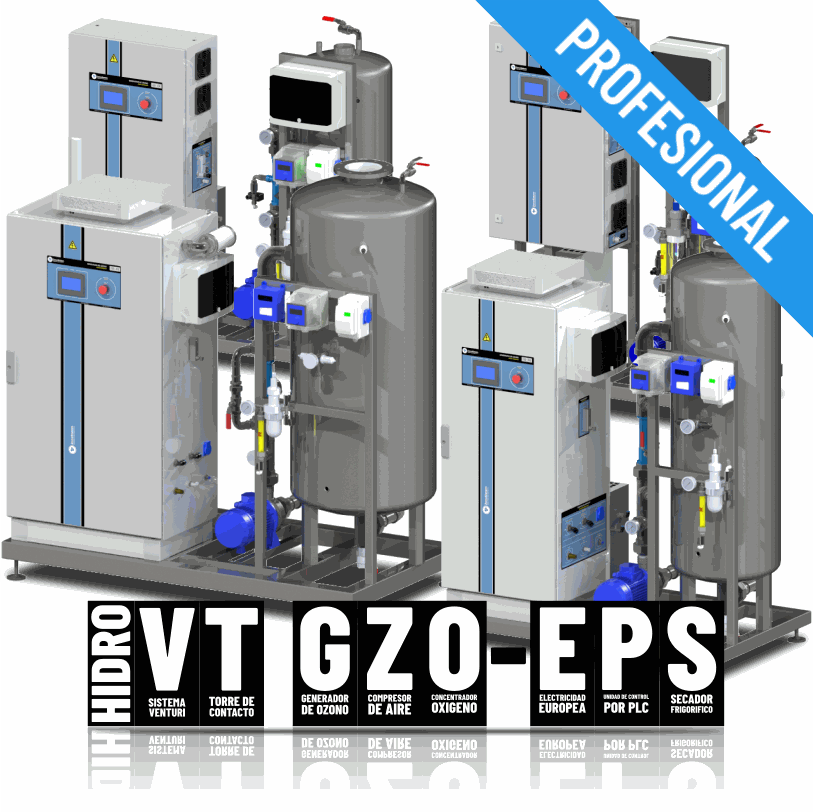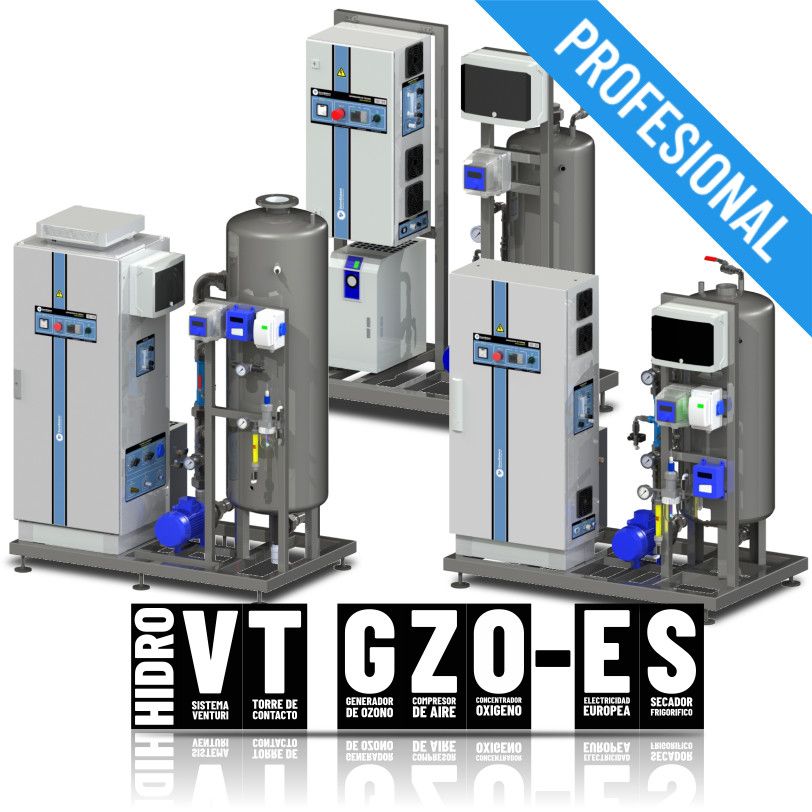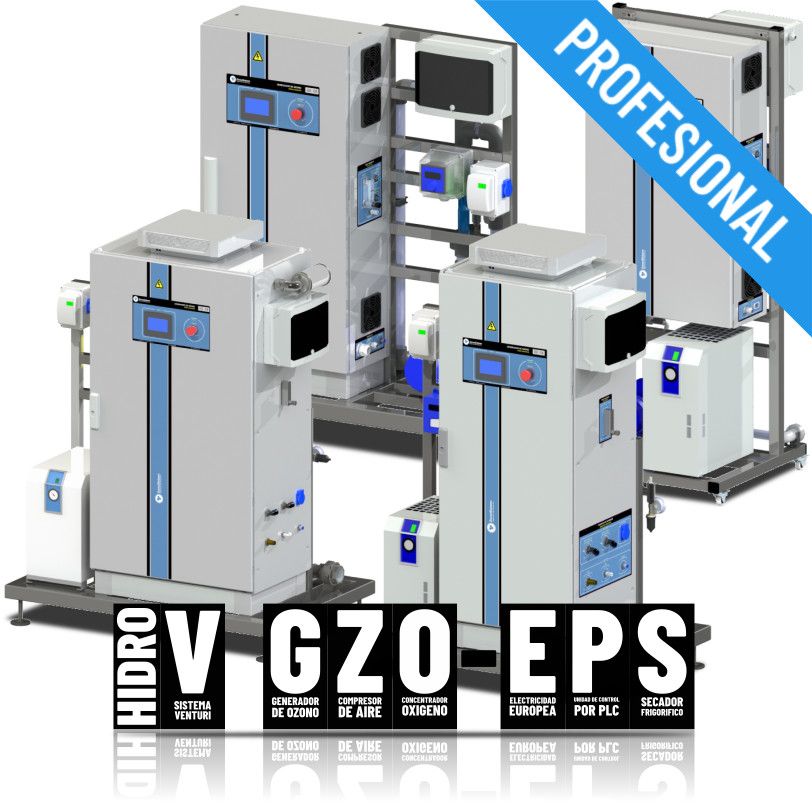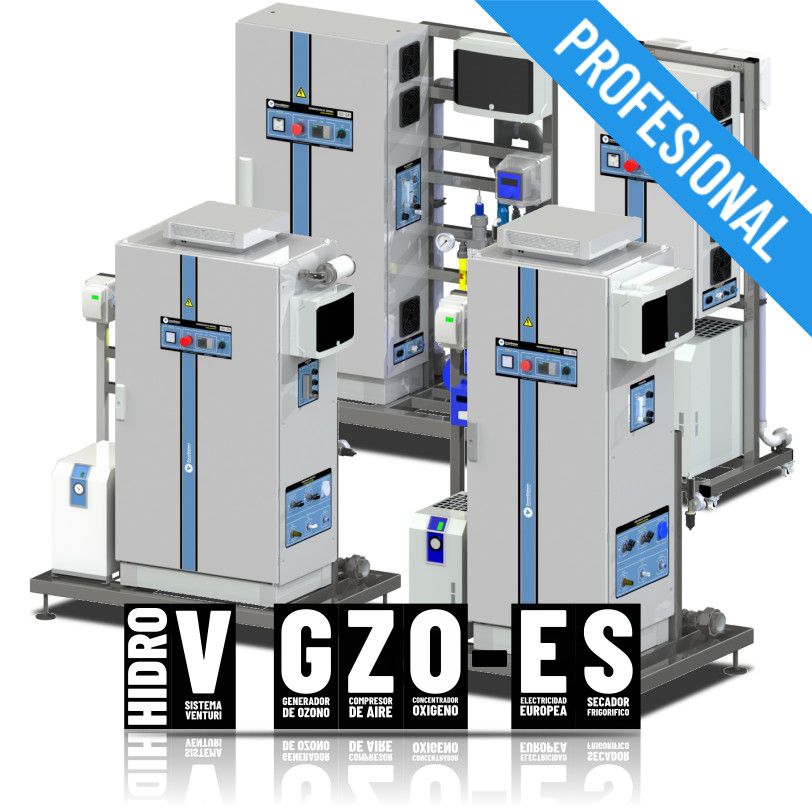Ozone in CIP Systems
Ozone Generators for Cleaning and Disinfection of CIP Systems

Use of ozone in CIP systems
Ozone has become a powerful tool for sanitizing and optimizing CIP (Clean-in-place) systems in all types of food and bottling industries. Ozone is a powerful disinfectant that removes all kinds of pathogens and biofilm from pipes. However, its real advantage lies in the savings it causes. It reduces the consumption of chemicals and hot water, the times and number of rinses, the quantity and also the level of contamination of discharges.
Ozone leaves no residue that could alter your recipes or products. In addition, this gas is generated in-situ, so it does not need to be transported, stored or handled. The system works fully automatically and does not require manual labor. You have a guarantee of disinfection, real-time measurements, and considerable savings compared to traditional systems.
Disinfect your bottling line with ozonized water and reduce chemicals, hot water, rinses, and spills
Ozone reduces the consumption of detergents, hot and cold water, and energy
Ozone is generated on-site, there is no need to store or transport chemicals
Ozone leaves no residue, does not alter your recipe and reduces spills
The system works automatically, does not require labor
Why Use Ozone to Clean and Disinfect the CIP System?
Do you want to reduce the consumption of chemicals in the bottling plant?
Do you want to reduce the number of CIP rinses?
Do you want to consume less hot water when cleaning?
Do you want your CIP to be less polluting for the environment?
Do you want to reduce the discharge water and improve its quality?
Do you want to reduce cleaning and disinfection times?
Do you want to save time and money on your bottling line?
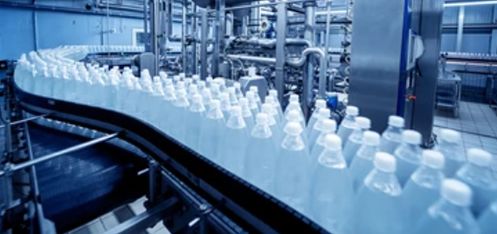
Advantages of using ozone in a Clean-in-Place CIP system
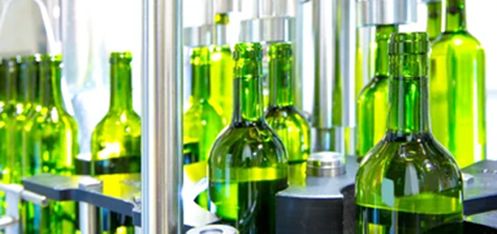
Disinfects and removes biofilm
Ozone is a powerful oxidant. When it is dissolved in the water it quickly eliminates all kinds of pathogens. The level of efficiency is much higher than that of conventional systems. It eliminates the biofilm from pipes, tanks and channels as it passes through them.

Save water, energy and chemicals
Thanks to the high efficiency of ozone to clean and disinfect pipes without leaving residues, the consumption of energy, water and chemicals will be reduced.

Reduce cleaning times
If you use ozone in your CIP, you will be able to reduce washing times and the number of rinses. This is dues to the powerful oxidation action of ozone. It will allow you to move faster from one product to another, with a greater guarantee of disinfection and without traces.
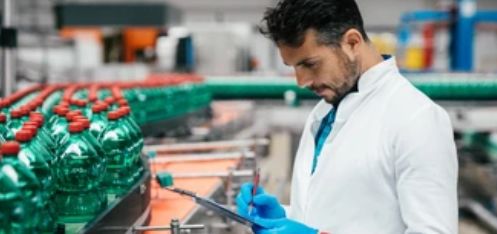
No waste, without altering your recipe
Ozone has a very high disinfection potential, but it has a low residual effect (it does not last over time). It transforms into oxygen after a few minutes and prevents your recipe from being altered.

More profitable and less risk
If you save chemicals, water, time and energy every day, you are reducing your operating costs. Also, your system will be more reliable and your customers will appreciate as you will reduce the risks of your products being contaminated by chemicals.
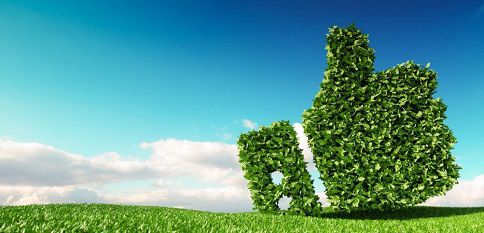
Reduces and improves discharges
By installing an ozone system in your CIP, you will considerably reduce the discharge of chemicals into the sewage system. You will reduce water and energy consumption. This will reduce the environmental impact of your laundry and protect the environment.
What type of Ozone Generator is used in a CIP?
Below you can find you the ranges of ozone generators to use in your CIP system or bottling line.
1. What is the difference between the ranges?
The 4 ranges include the ozone generator, the compressor and the oxygen concentrator.
HIDRO VT ranges are used to inject ozone directly into the washing water pipe. They include a pump and a venturi to inject the ozone gas into the pipe and a contact tower to homogenize the mixture. HIDRO V ranges, on the other hand, are used to inject ozone into a buffer water tank through recirculation with a pump and venturi.
The -EPS, have an automatic power control by a PLC. It allows that the washing can always be done with the same amount of ozone dissolved in the water, as it adapts the amount of ozone to keep the desired concentration. The -ES, on the other hand, have a manual power control. It introduce a fixed and constant amount of ozone, which can cause some washes to go with more or less ozone than others depending on the water demands.
2. What range do you recommend?
It depends on your hydraulic system. If you have a buffer tank from which you supply water to different bottling points, you should use a HIDRO V. If you do not have a buffer tank, you should install a HIDRO VT in the main line that supplies water to all the washing lines.
As for the control, -EPS is better, will allow youa better control as it is automatic. However, if you want to save some money and you only have one washing line the -ES would be a good option.
3. How much ozone do I need?
You will have to apply 1.5ppm for each cubic meter of water to be treated. In other words, if you fill at 20m3/h, you will have to have at least a 30gO3/h unit.
Example of ozone equipment in CIP systems
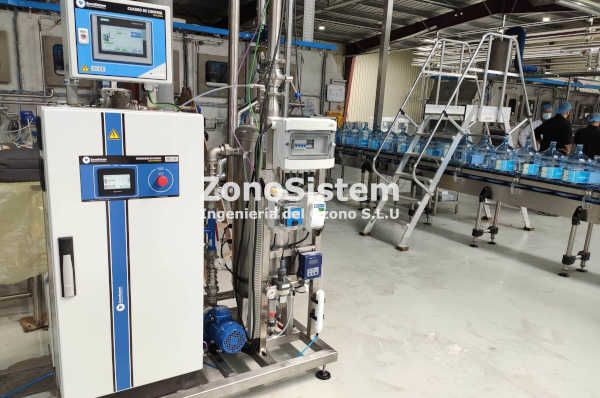
Ozone in a water bottling company, Spain.
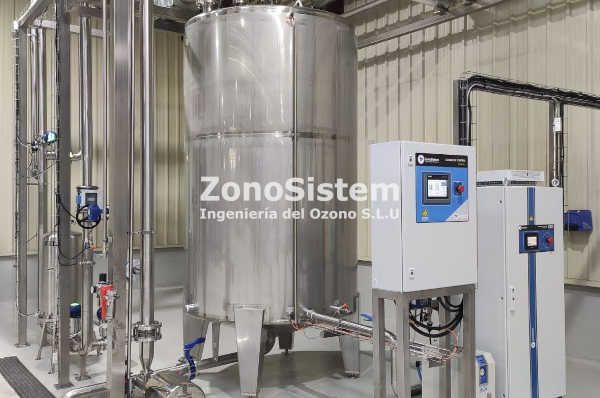
Ozone in a water bottling company, Spain.
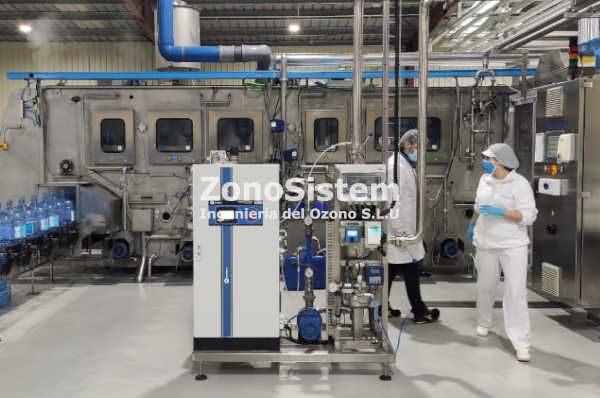
Ozone in a water bottling company, Spain.
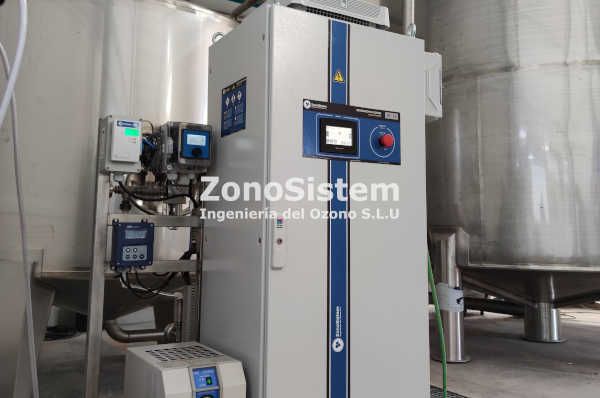
Ozone in a wine bottling company, Spain
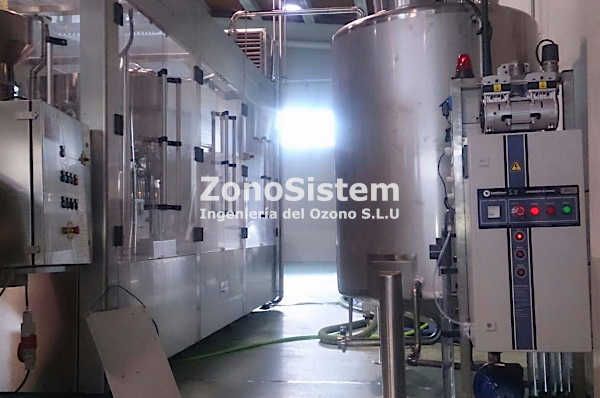
Ozone for a wine bottling train, Spain
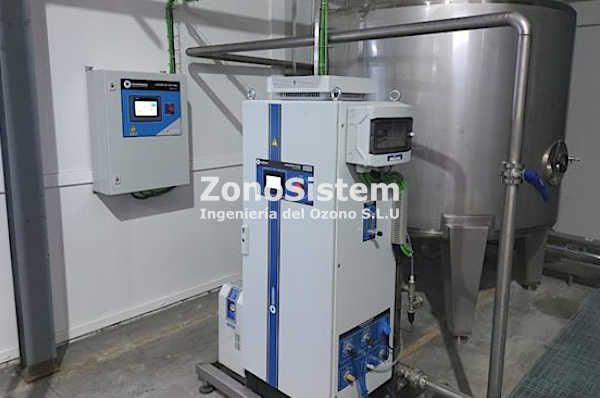
Ozone for CIP, Spain

